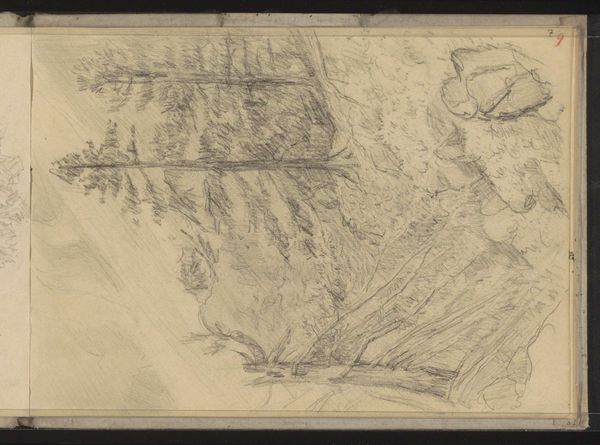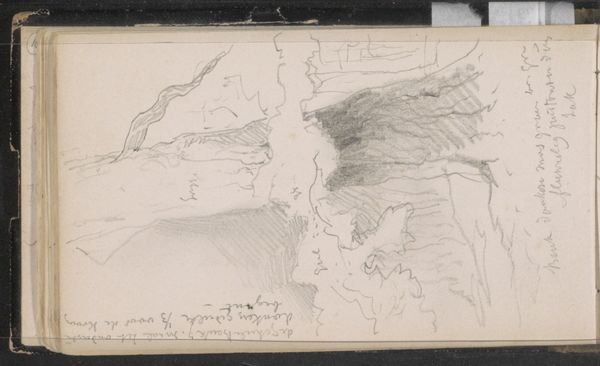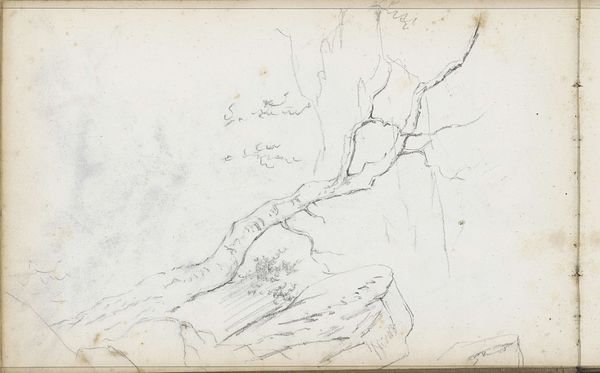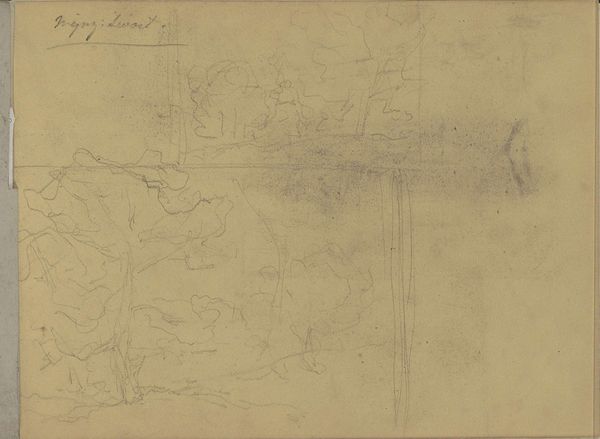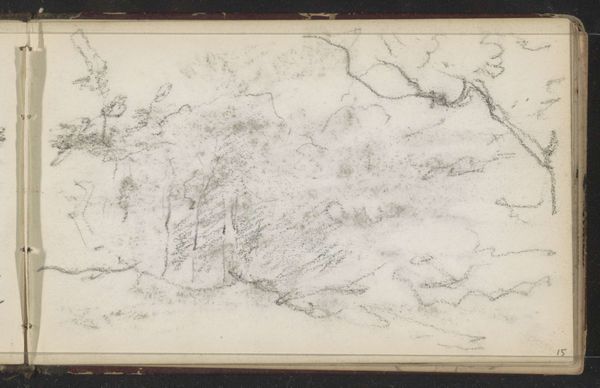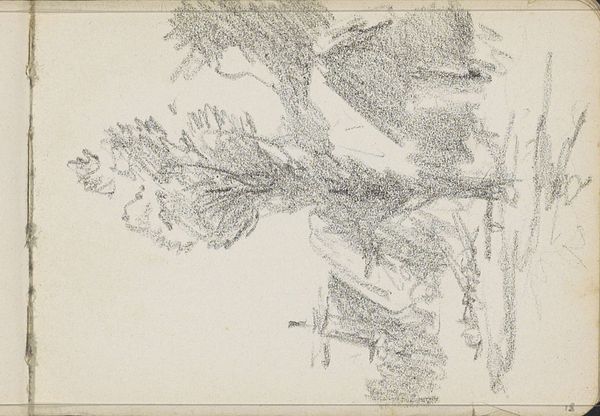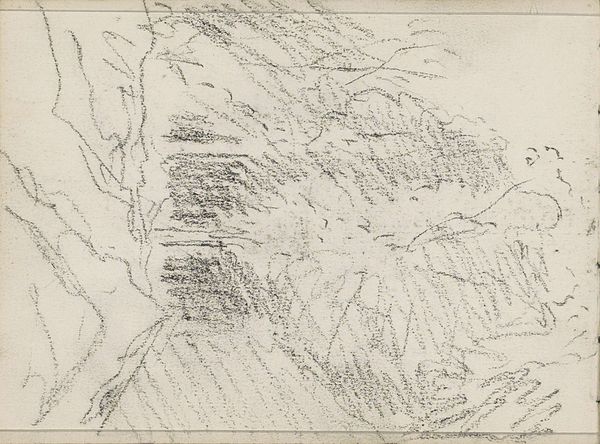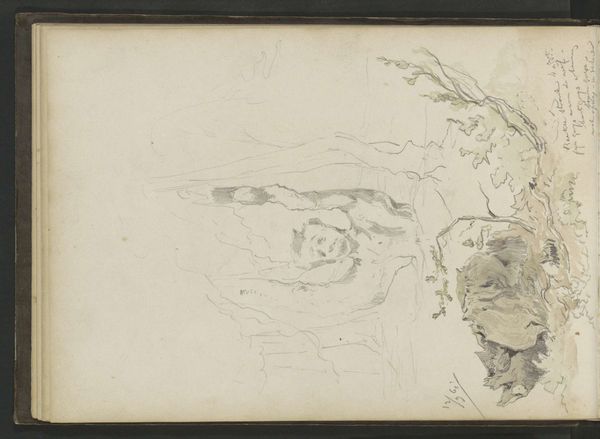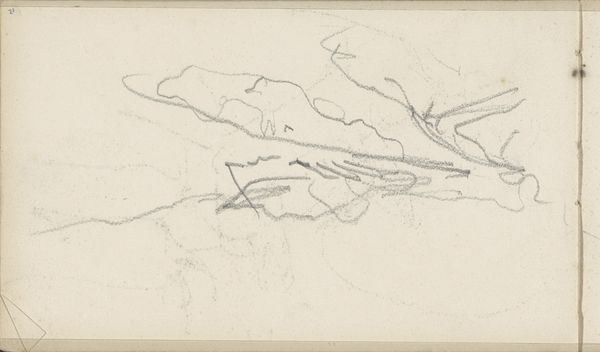
drawing, pencil
#
drawing
#
amateur sketch
#
toned paper
#
pen sketch
#
pencil sketch
#
incomplete sketchy
#
landscape
#
personal sketchbook
#
ink drawing experimentation
#
pen-ink sketch
#
mountain
#
pencil
#
sketchbook drawing
#
sketchbook art
#
realism
Copyright: Rijks Museum: Open Domain
Editor: Here we have Jozef Israëls' "Berglandschap met losse takken en boomstammen," created sometime between 1834 and 1911. It's a pencil and pen drawing on toned paper. Looking at the quick, almost frantic lines, I feel a sense of urgency, a capture of a fleeting moment in nature. What strikes you most about this sketch? Curator: What I find compelling is how this seemingly simple landscape sketch reflects broader anxieties around industrialization and humanity's relationship with nature that defined the 19th century. Consider the context: urbanization was rapidly transforming landscapes, and artists like Israëls were grappling with questions of authenticity and the loss of the "natural" world. How do you think Israëls' choice of such raw, unrefined marks contributes to this dialogue? Editor: I hadn't thought of it that way. The roughness of the lines does make it feel like a very immediate response to the landscape, like he’s trying to grasp something before it disappears. Is there a connection to ideas of the "sublime" at play here, the feeling of being overwhelmed by nature? Curator: Precisely! This connects to the sublime, but also to the developing realist movement and its concerns. Instead of an idealized landscape, Israëls offers a direct, almost unmediated experience. I would ask, how does this more realistic style give agency and voice to those most impacted by the political choices to embrace industrialism? Editor: I guess it gives dignity to the hard work it takes to shape mountains and trees into industrial landscapes, and the sketches themselves become almost like documents, recording a changing world from the point of view of the working class? Curator: Yes, and by focusing on this subject matter with immediacy and authenticity, artists gave visibility to lives that were previously pushed to the margins, inserting their narratives into the mainstream art world. Editor: That makes me appreciate the drawing so much more. It’s not just a pretty landscape, but a document reflecting anxieties about a changing world. Curator: Absolutely. And seeing art through this lens allows us to have vital conversations about who controls resources, and whose voices are centered when political choices about their usage are being made.
Comments
No comments
Be the first to comment and join the conversation on the ultimate creative platform.
